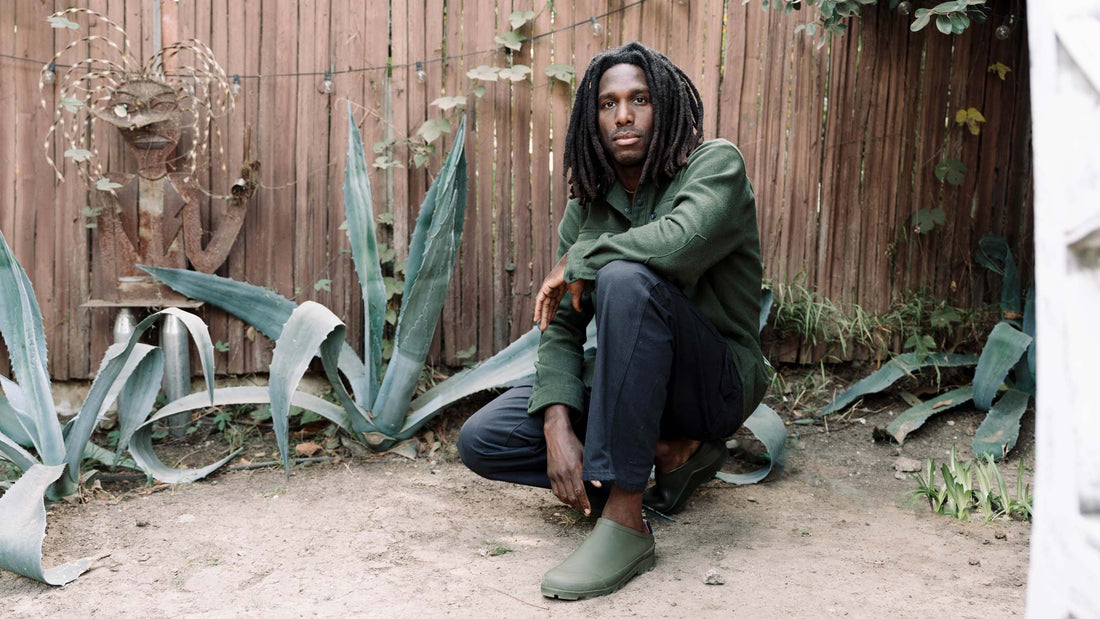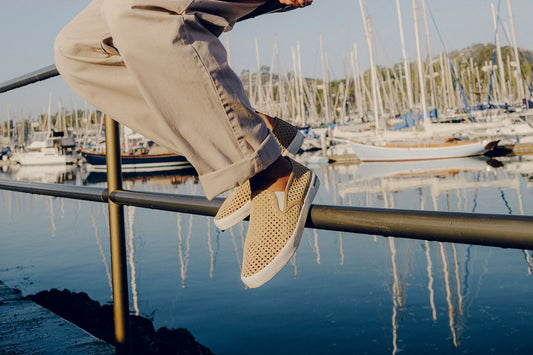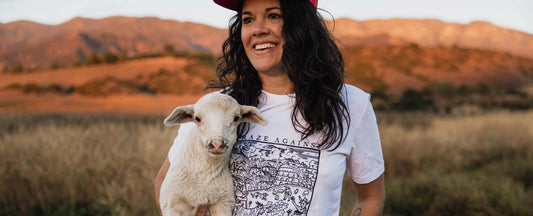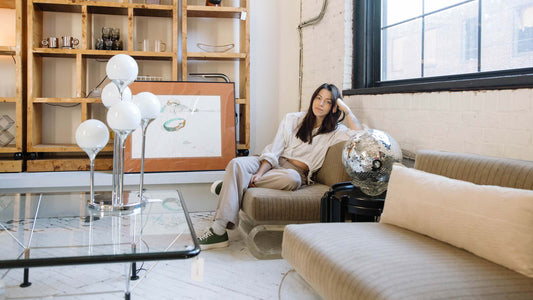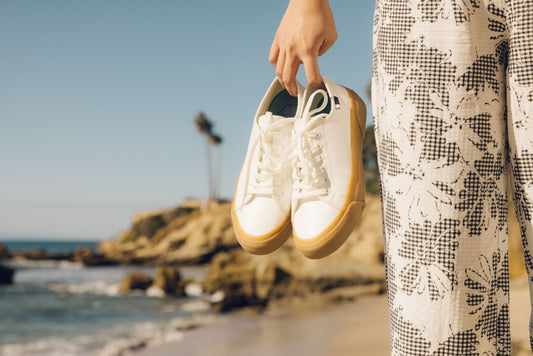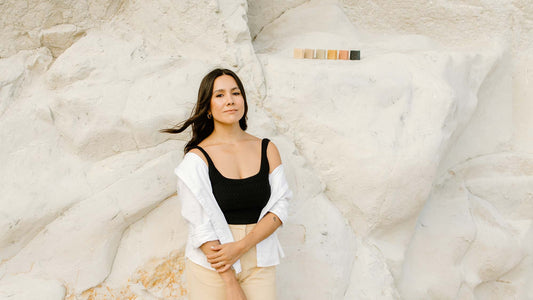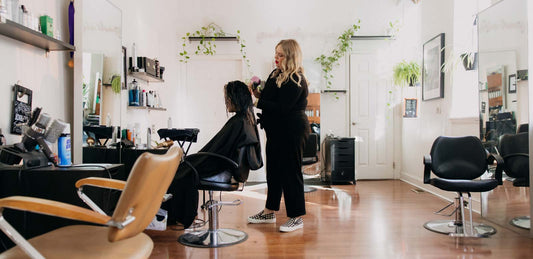As a young child, Rio Lakeshore’s mother uprooted his family from the densely populated city of Inglewood, California, to a suburban enclave in the Mojave Desert. “She was still commuting to the city every day, which meant I had to get around on my own,” he remembers. “I figured I’d get places faster if I ran.”
What started as a means of getting from point A to B shifted to a meditative practice as Rio began to seek solace in the isolation running necessitated. “The terrain of the desert is very harsh, very dry, very unwelcoming, but I grew to love it,” he says. “It gave me space to just be.”
Rio’s mindful, even poetic approach to sport was reflective of his more internal passion for writing. As his running accolades and awards began to garner the support of sponsors, he used their platforms to share his wisdom through published pieces that brought about a new dream of transitioning from lone runner to community luminary: “It’s taken a long time, but I’m sharing what I’ve learned.”
As told to SeaVees. Photography by Johnie Gall


“When I moved to Washington in high school, I had nothing in my consciousness about what a mountain trail or the lushness of the Pacific Northwest would be like. How the pine needles create this surface that’s gentle on your body, the oxygen feels richer, the wildlife is abundant. I felt hugged by the terrain rather than suspended in the abyss of nothingness in the Mojave. I felt a lot more energized in a way, which helped me to push further with running. I was tracking time not with a watch, but by noticing how my runs were getting shorter, meaning I was getting a lot faster.
“I felt hugged by the terrain rather than suspended in the abyss of nothingness in the Mojave.”
I went to art school in Seattle, but I left without my art degree—it felt way too expensive for someone to explain to me what art was [laughs]. I had studied illustration and fashion design and graphic design, but none of it actually spoke to me. I think I had just admired those things but not necessarily had the passion for them. I started teaching preschool at a Reggio Emilia school, which was about investigating and learning through play. At the end of the week we’d have to write up these reports called “in-depths,” and while it was tedious at times, it was also fascinating to see how the children would explore with whatever elements we gave them. I assumed at that point I’d continue in education like my father’s side of the family, but I got burnt out.

After that, I worked at a little market during the day and two different bars as a door guy, a bouncer, at night. I’d start each day with a run and feel so good in that element of movement, only to feel that energy slowly get sucked away as I spent time absorbing the hurt in those places. I’m not saying everyone who goes to a bar is hurting, but there was a lot of hurt going on inside those doors. Eventually I moved to Australia with my partner at the time and was playing music there, but then we had our first child and I just didn’t feel like that lifestyle was one for a father. I think his birth was the catalyst for me taking running really seriously. When we got back to the states, I was like, ‘Alright, I’m going to really hone in on this and take this seriously.'


I had to find my way into the more competitive side of running, which I had shunned for so long. I had to focus on properly training and having a schedule, whereas before I was more of a meditative runner who never wore a watch. Two years in, I was racing in the Pasadena half marathon when my coach found me. He saw me running, I saw him and we both said, “Okay, that’s the guy.’ He’s still my coach today, and he got me to the point where I could run ultramarathons, which is anything over 26.2 miles and generally on trails. I started to garner some attention and got into a few running ads for Tracksmith, and then Roark put together Run Amok, which is the running segment of their brand and I signed on with them. But you know what? I didn’t even consider sponsorships or anything until it started getting expensive to enter races. For a long time I was just grappling with just finding myself as a runner.
“He was a writer and studied the connection between the mind, body and soul and it felt almost like I’d come back as him.”
I spent a lot of time not being in the top three in a race, and when you aren’t first, second or third, you kind of just get a pat on the back. I was hovering in that zone with the top five and ten guys and it was incredibly frustrating. The race that boosted my confidence was the Avalon Benefit ultramarathon, where I came in second place. My approach to that race was different because I was like, “I’m not going to win, so I may as well enjoy being on this island.” The moment I let go of my ego, I started to do well.>

I’d be lying if I said I didn’t doubt this as a career every single day. I’m at a transition period now where I want to make proper money and follow passion projects and dreams because I am more than just a runner. When I was 16 years old, I had this very hip creative writing teacher who pulled me aside and said “You have flow. The way you write is very poetic.” I had never thought anything of my writing but she saw my potential and talked to me about the Harlem Renaissance and James Baldwin and other prominent African American writers. I realized I could write philosophically and poetically and still drive a message home, even if it was about sport.


I continued to write. No one ever saw it. I think the first time someone read my work was when my mom read my first published piece that came out in 2020 and she was like, “Wow, you can really write.” During the height of the Black Lives Matter movement, I covered a run for justice race around the Silver Lake reservoir. On the fence there, the community had woven fabric from all the victims of the police brutality and I wrote a story on it. I’ve had ten pieces published since then. I don’t put myself out there as a writer so I think it’s a lot of luck, having the right people see my work. I wrote a piece about my Uncle Malachi who was a kinesiologist, a dance instructor and a writer. I found out about him years after he was gone and the parallels between us were so wild. He was a writer and studied the connection between the mind, body and soul and it felt almost like I’d come back as him. The story came to me and I pitched it even though I had no idea what I would write.

I was in Sardinia recently running through these small towns and I’d meet a shepherd or a random cyclist and all I wanted to do was hear their stories. My dream would be to find a way to do just that, find interesting people along my runs and preserve their stories. The stories I’m interested in aren’t the meaty adventure-style stuff. It’s more like, “What’s that guy doing over there with that boat? I want to know his life story.” I want to do more community stuff, like form a youth-led running group that would be geared toward inner-city kids or kids from lower socioeconomic backgrounds. I have dreams of putting together a collective of athlete artists, forming some kind of representation collective. And I’d like to write a book.
“Dreams are a lot like ultramarathons in that they take a long time to finish, but the only way you get to the end is by putting one foot in front of the other.”
My dream for others would be for them to find something that elevates them mentally, physically and spiritually and for them to be able to make some part of that their vocation. Maybe society wouldn’t function if everyone was an artist, but when I was most unhappy was when I was just doing things to get by. Dreams are a lot like ultramarathons in that they take a long time to finish, but the only way you get to the end is by putting one foot in front of the other. Dedicate a little bit of time every single day to whatever your craft is. When I started to believe in myself and I invested in myself, that’s the moment things started to align."
Rio wears the Men’s Bodega Clog in Military Olive and the Men’s Legend Sneaker Original in True Navy.

